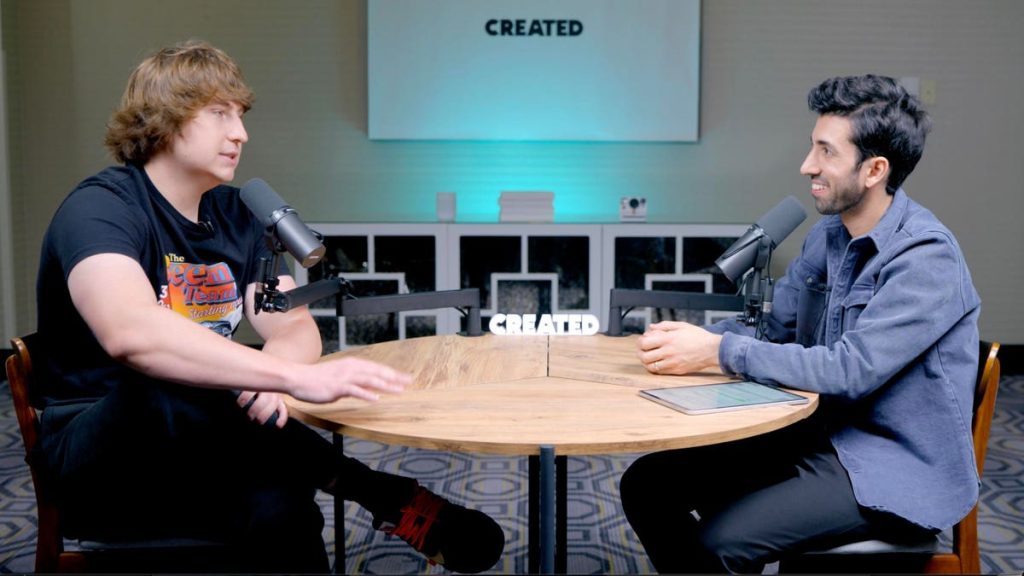“I’m out like $40,000. I’m offering money that I didn’t even have. I had to take a personal loan and my credit wasn’t the best.”
My heart sank as the 26-year-old Matthew Beem told me how he started his YouTube channel while working as a $9-per-hour car mechanic. Born and raised in Colorado, Beem is part of the 33% of Gen Z whose top career choice is becoming a full-time YouTuber. I spoke with him and several top YouTube stars to hear the stories beyond the statistics. Namely, what’s the upfront financial – and emotional – costs to become a YouTuber today? How has Jimmy “MrBeast” Donaldson, who pours millions of dollars into his YouTube videos, influenced aspiring creators? And what does that all mean for the future of the creator economy?
“They’re paying me $9 an hour,” Beem said of the first job he took to fund his YouTube channel. “That was basically cleaning the toilet, the cars, and sweeping up the shop. Over the course of seven years, I worked my way up into different roles until eventually I became the painter [at the car shop] so I could use that money to then go all in on YouTube.”
BUYING A CAR TO GIVE IT AWAY
After years of saving, Beem’s first big purchase was a $13,000 car that he described as “super beat up, had cigarette holes in the seat, and it looked disgusting.” But instead of buying a car for work day commutes, Beem bought it to restore, paint, and gift to his role model: Jimmy “MrBeast” Donaldson — who’s amassed over 170 million subscribers with videos giving away private islands, touring a billion dollar yacht, and burying himself alive for 50 hours.
Back at the auto shop, Beem’s colleagues thought he was out of his mind.
“I was the laughing stock of the entire shop,” Beem said. “I’d be painting a car and they’d be like, ‘do you see that stupid car Matt bought? He’s just gonna give it away…and spend even more to wrap it.’
For Beem, this idea wasn’t crazy. It was calculated. He covered the car with the logo and colors of Donaldson’s new burger shop, Beast Burger, which opened a few months prior to a line of 10,000 people. This was Beem’s eureka moment. It dawned on him that his auto job didn’t just provide him with money, but hard skills to stand out on YouTube.
“Larger creators all have their own unique value. Mine was being in the car industry [when] the average age in my industry was like 55,” Beem said. “There’s probably a good likelihood that I’m the only person that’s really into YouTube that can paint a car and know someone that can wrap a car.”
To revamp the car, Beem borrowed nearly $20,000 at a staggering 15%, but that wasn’t what scared him. It was the fact that Beem didn’t know Donaldson, nor have any contact before delivering the car. Regardless, Beem took the risk. He drove 26 hours from Colorado to MrBeast’s headquarters in North Carolina, furiously firing off messages to Donaldson in hopes of hearing back.
“It’s a lot easier to say no to an idea than something that’s real,” Beem reasoned. “We waited until we were like two states away then I sent the message, sent the picture, sent a screenshot of the GPS saying that we’ll arrive in the state. I didn’t even know where they were in the state. Just ‘we’re coming to this state I know that you’re somewhere in. I’m headed that way.’”
Hours go by and still, Beem had heard nothing. Routinely refilling at a gas station, Beem gets a call. “We work with MrBeast and Jimmy will see you Saturday,” a voice says.
Delivering the car to Donaldson, Beem felt like he finally had checked the boxes to make a viral video: involve a popular YouTuber, time it with a trend, and film a challenge you literally have to see to believe.
Despite that, his video titled “I surprised MrBeast with a custom car!” initially flopped.
“It gets 2,000 views the first day. Compared to what I invested, it was really scary,” Beem recalled. “55 days later, still, it doesn’t even have a hundred thousand views and it hurt me really badly.”
SMALL CHANGE, DRAMATIC RESULTS
Beem felt an avalanche of anxiety from friends and family who doubted his “all in” approach from the start. It didn’t help that he dug a deeper hole in debt, borrowing $40,000 for another video where he remodeled Logan Paul’s car without having contact with him either.
But before they got the last laugh, Beem threw one last hail mary. It was a chess move only a YouTuber who obsessively studies the platform would know to make. After analyzing the metrics of his MrBeast car video, Beem changed its YouTube thumbnail (the tiny image viewers see before deciding to click on a video; like a movie poster for YouTube videos).
“I removed myself from the thumbnail,” Beem said. “I was a really big part of it then we realized the main thing here is the car and MrBeast. [Viewers] might not really care about me as much [since] I’m this new person.”
That small change led to dramatic results. The video’s click-through-rate skyrocketed as did the views, which now sit at 5.8 million. Beem also had the foresight to stockpile videos beyond the MrBeast and Logan Paul ones, which were now being recommended to millions across YouTube during Beem’s first viral moment.
THE MR.BEAST BLUEPRINT
Beem isn’t the only one following the “MrBeast Blueprint” of making extreme challenge videos. This includes creators like Fidias who ran a half-marathon barefoot in the snow, Victor Galvan who spent 4 days sleeping on the street for David Doughbrik’s pizza shop grand opening, and Eric “Airrack” Decker who camped on a deserted island until he crossed one million subscribers.
In fact, Decker financed his first videos in the exact way as Beem — going into debt. During my interview with Decker, he told me he “maxed out [his] credit card and spent all the money in [his] bank account” to make his breakthrough video flying across the country to sneak into Jake Paul’s boxing match. Months later, Decker made a series of videos about Logan Paul’s couches, which required a loan of $17,000.
“I applied for an SBA government loan of $17,000,” Decker recalls. “Then I cashed the entire thing out in bricks of money, put it in a backpack, and flew to California.”
HOW MUCH DID THE MONEY ACTUALLY HELP?
Years later, it seems both Beem and Decker’s risks have paid off. Beem has over 4.5 million subscribers and brings in around $60,000 a month through YouTube’s AdSense program, with additional brand deals up to $85,000 each. Decker has surpassed 14 million subscribers, and has said he’s made over $480,000 in a month through AdSense and brand deals.
Is this the path to success on YouTube? Do aspiring creators need to plunge into debt, taking out loans and max out their credit cards to pursue their dream? Or is there still truth behind the idea that “anyone can make it” on YouTube?
When I asked Beem that question, he said: “people believe for some reason that [succeeding] on YouTube or TikTok should happen right now. But we go to college and school and we’re fine with waiting for four or five years for it to happen.”
“It takes time and you have to learn, you have to study things,” he continued.
Beem told me he’s heard creators with plans to copy his approach, to invest thousands into their first video. But that wasn’t the case for Beem, “I was 200 videos into my career when I spent that much money,” he said.
If YouTube is like school, then Beem’s investments were like his tuition. Those 200 videos, which included ideas that were both expensive and cheap, helped Beem practice on camera while he honed his auto skills off camera. It helped him understand how to design thumbnails. Most importantly, it helped Beem understand what ideas will work on YouTube.
Beem emphasized that “YouTube is a game of ideas,” more than a game of money. For him, the money was never what made an idea work — it was just the cost of the idea. After all, there’s a reason why creators like Bobby Misner don’t rack up MrBeast numbers with his channel about life as a billionaire’s son. Decker agreed, saying he now prioritizes figuring out the video’s title, thumbnail, and introduction before spending a dime to film so he can assess whether it’ll perform. Other creators like Ryan Trahan gained over 100 million views through his low budget “Penny Challenge” series where he crossed America, and most recently Europe, while trading up from 1 cent.
Point is: none of these creators did it on their first few uploads. Money accelerated the process but it didn’t replace the trials and experience needed — both on and off camera — to succeed. It’s easy to talk about all the dollars that creators like Donaldson, Beem, and Decker spent on their videos. But don’t dismiss all the time they spent brainstorming those ideas — and hundreds of videos that came before the ones that broke through. That’s where you’ll find the real blueprint.
Read the full article here










